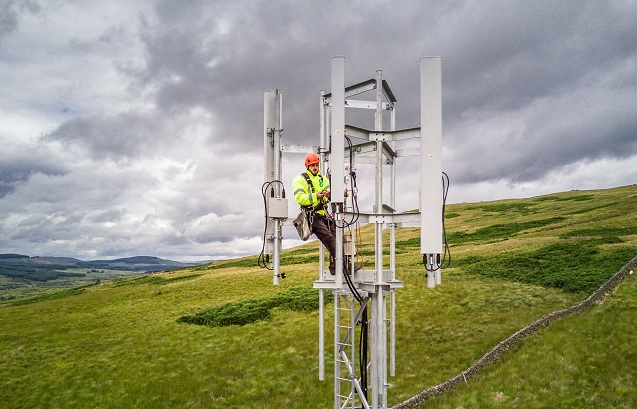Cuts ties to the power grid and safely projects kilowatts of power over kilometres
At a proof-of-concept demo in Seattle last week Ericsson used optical beaming to convert electricity into high-intensity light which is then captured and re-converted to electricity at the target radio base station.
It means that 5G base stations could be unconstrained by wires and powered by cheaper and more reliable sources than solar panels.
Ericsson demonstrated how it plans to use lasers to power Radio Access Network (RAN) sites with the help of US laser specialist PowerLight Technologies, its co-developer of fully wireless-powered 5G base station.
Base stations no longer constrained
No wires were connected to the site from the street power grid network and no on-site power generation was involved, says Ericsson. The base station site was completely ‘powerless’ until wirelessly powered over the air through a laser beam.
The co-developers aim to give 5G base station builders more speed and flexibility when installing diverse environments.
In the demo wireless power was beamed to an Ericsson Streetmacro 6701, a 5G millimeter wave (mmWave) radio base station, using PowerLight’s lasers that can transmit hundreds of watts for hundreds of meters.
Ericsson and PowerLight Technologies say they intend to develop new versions that transmit kilowatts of energy over longer distances.
Laser charging not just for the little things
“This opens new possibilities for Ericsson and our customers,” said Kevin Zvokel, head of networks for Ericsson North America. Being tethered to the power grid is one of the big obstacles Ericsson faces when building new cell sites. “The time savings and flexibility gains will make this an attractive solution for our customers.”
Wireless charging technology is no longer for cell phones and watches, said Claes Olsson, PowerLight’s executive chairman. “This breakthrough demonstration shows the major leaps we have made recently toward the commercialisation of safe, wireless power transmission for larger-scale systems,” said Olsson.
Lasers won’t be fatal
The technology to transfer kilowatts over kilometers will be commercially available in the next few years, said the Powerlight chairman.
Safety will be a concern for local authorities. The laser beam has a virtual shield or safety ring that automatically and temporarily shuts down power transmission before any living or inanimate object crosses its path. When the safety ring is activated, the site’s back-up battery takes over until the beam is cleared.


